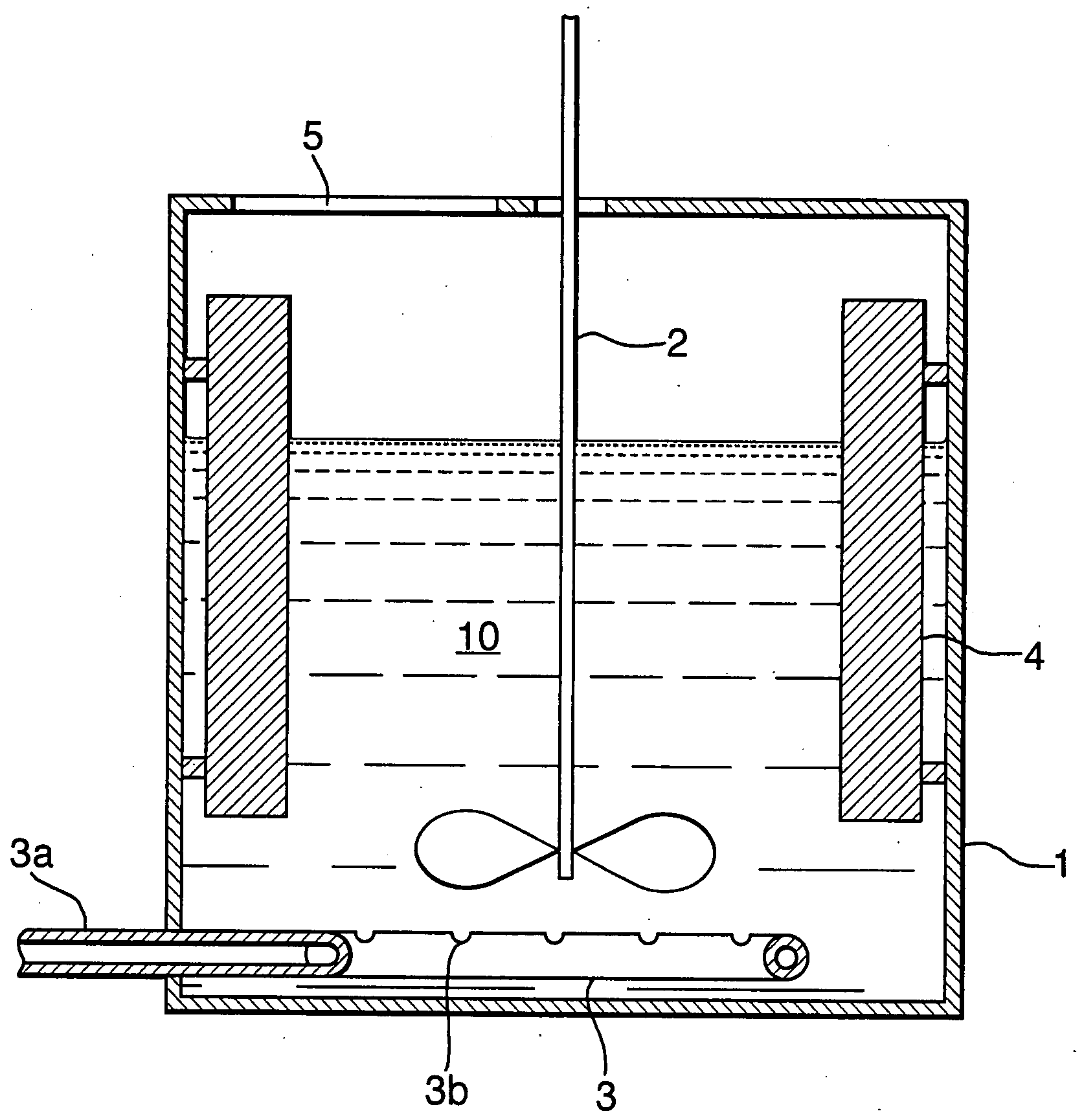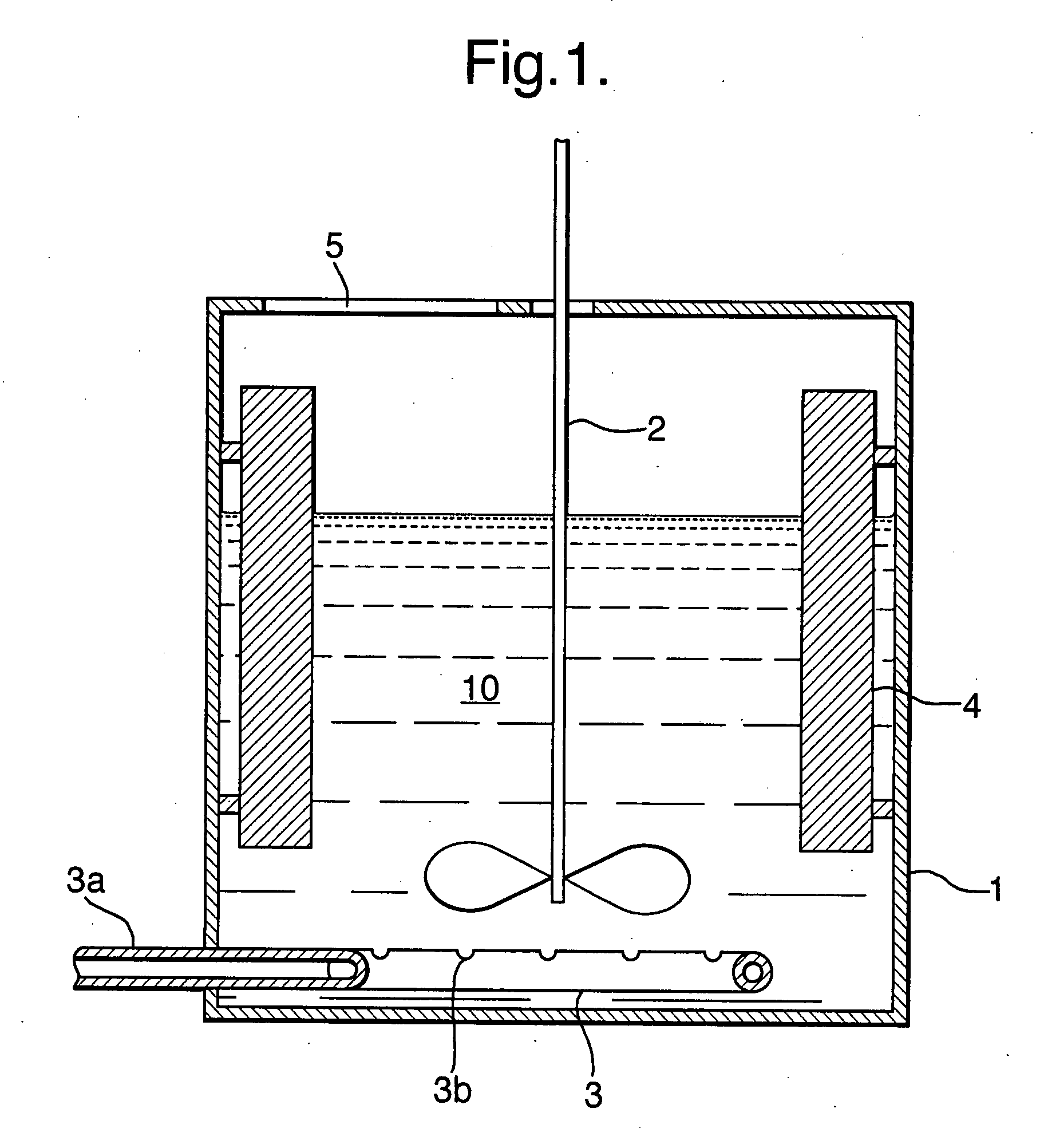Process for producing theaflavins
a technology of theaflavin and process, which is applied in the field of theaflavin production, can solve the problems of slow degradation and complex polymerisation, and achieve the effects of increasing the maximum level of tfs, high yield of theaflavin, and stabilising the tf level attained
- Summary
- Abstract
- Description
- Claims
- Application Information
AI Technical Summary
Benefits of technology
Problems solved by technology
Method used
Image
Examples
example 1
[0088]This Example details a series of experiments demonstrating the effect of the ratio R on the yield of theaflavins in a slurry fermentation.
[0089]Materials
[0090]Tea leaf used was Kenya Clone 35 flown in fresh from Kenya to our laboratory in Bedfordshire, UK (time from picking to arrival was approximately 20 hours), moisture on arrival =76.8% by weight. The leaf was withered in trays at an air temprtaure of 20° C. for 18 hours (moisture reduced to 70.8% by weight), before being macerated using a vegetable cutter (Alexanderwerk™ AWBS 150) and three passes through a CTC machine (rotor speed ratio 10:1). The fresh macerated leaf was then rapidly frozen in a blast freezer. The time from first cut of the leaf to freezing was kept to a minimum and was always less than 15 minutes.
[0091]All water used was de-ionised (18 MΩ).
[0092]Reactor
[0093]All experiments were carried out using a tank reactor as shown schematically in FIG. 1. The reactor comprised a cylindrical tank (1) having a radiu...
example 2
[0108]This Example compares a batch fermentation with a process according to the invention wherein the first material is formed by fermenting tea leaf with additional purified catechin.
[0109]Experiment 6
[0110]0.6 g of epicatechin (Sigma-Aldrich Co. Ltd, Gillingham, UK) was dissolved in 750 ml deionised water. 30 g of frozen leaf (as described in Example 1) were then mixed with the epicatechin solution in a reactor (as described in Example 1). 10 g aliquots of frozen leaf were then added to the fermenting reaction mixture every 2 minutes for 24 minutes. Fermentation was then continued for 180 minutes with regular sampling of the reaction mixture to determine the content of theaflavins.
[0111]Experiment 7
[0112]Experiment 6 was repeated except that the frozen leaf (150 g) was added in a single aliquot at the start of the reaction.
[0113]Experiment 8
[0114]Experiment 6 was repeated except that no epicatechin was dissolved in the deionised water.
[0115]Results
[0116]Table 3 shows the results ...
example 3
[0120]This Example demonstrates the manufacture of a leaf tea product having a high level of theaflavin-3-gallate.
[0121]Experiment 9
[0122]1.2 g of epicatechin (Sigma-Aldrich Co. Ltd, Gillingham, UK) was dissolved in 750 ml deionised water. 30 g of frozen leaf (as described in Example 1) were then mixed with the epicatechin solution in a reactor (as described in Example 1). 10 g aliquots of frozen leaf were then added to the fermenting reaction mixture every 2 minutes for 24 minutes. Fermentation was then continued for 60 minutes and the reaction mixture then dried to a moisture content of <5% to produce the leaf tea product.
[0123]Results
[0124]The leaf tea had a total theaflavin content of 79 mg and a theaflavin-3-gallate content of 30 mg per g of dry leaf.
PUM
 Login to View More
Login to View More Abstract
Description
Claims
Application Information
 Login to View More
Login to View More - R&D
- Intellectual Property
- Life Sciences
- Materials
- Tech Scout
- Unparalleled Data Quality
- Higher Quality Content
- 60% Fewer Hallucinations
Browse by: Latest US Patents, China's latest patents, Technical Efficacy Thesaurus, Application Domain, Technology Topic, Popular Technical Reports.
© 2025 PatSnap. All rights reserved.Legal|Privacy policy|Modern Slavery Act Transparency Statement|Sitemap|About US| Contact US: help@patsnap.com


